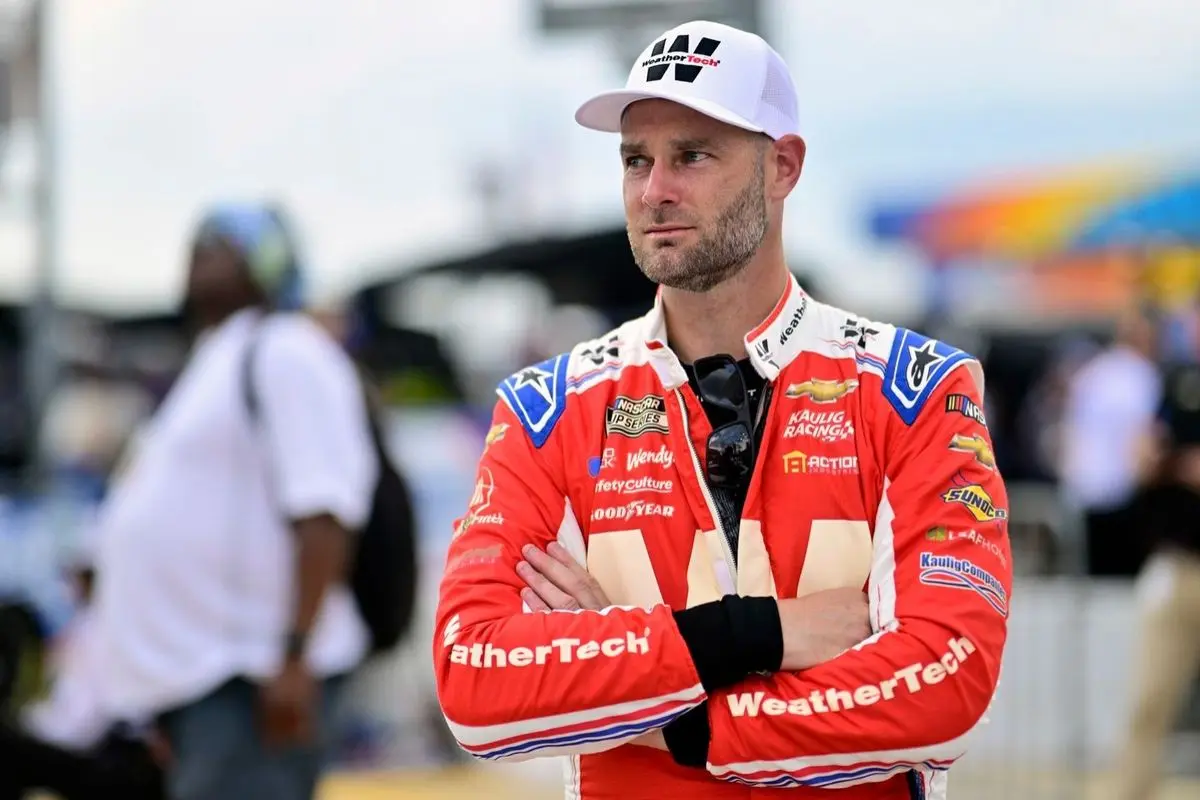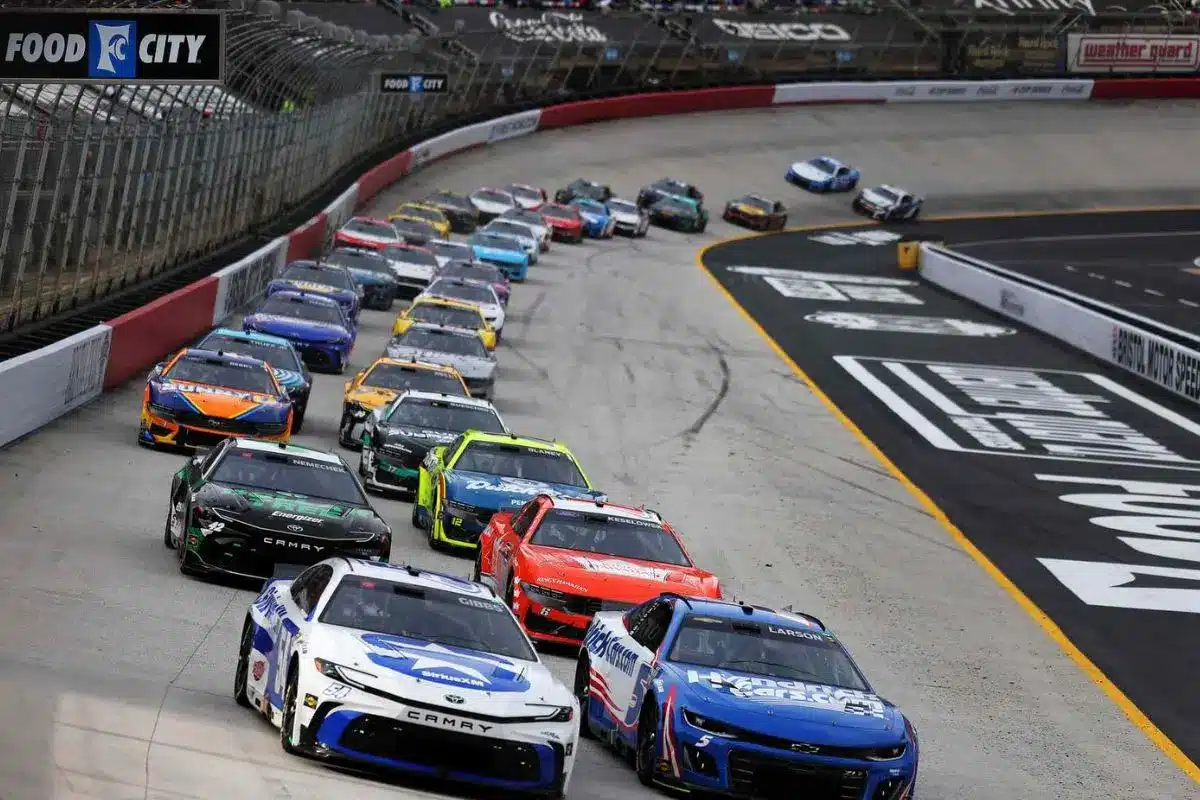Road Courses are taking over NASCAR, reflecting a noteworthy shift in the sport’s competitive landscape. Increasing NASCAR fan engagement and diverse racing experiences have driven the rise of road courses, expanding from two events in 2016 to a projected six by 2025. The popularity of dynamic driving styles and tactical timing has attracted attention from new talents like Shane van Gisbergen. This change poses challenges for traditional oval races, which face declining viewer interest and may risk being phased out.
Key Highlights
- NASCAR has significantly increased road course events, rising from two in 2016 to a projected six by 2025, indicating a clear trend away from ovals.
- Viewer ratings for traditional oval races are declining, leading fans to favor the excitement and close finishes typical of road course races.
- The inclusion of diverse talents, like Shane van Gisbergen, enhances the competitive edge of road courses, attracting new audiences and sponsors.
- The modernization of NASCAR’s brand through road courses is appealing to younger fans, reflecting a shift in preferences and engagement strategies.
- Future schedules may feature more road courses, potentially diminishing the relevance of traditional oval tracks in NASCAR’s racing landscape.
The Legacy of NASCAR on Road Courses
Embracing the challenge of road course racing has become an essential part of NASCAR’s identity, showcasing the versatility and skill of its drivers. Historically, NASCAR has been primarily associated with oval tracks; however, the introduction and integration of road courses have greatly enriched the competitive landscape. Pioneering drivers such as Bobby Allison and Jeff Gordon have set a precedent by excelling at venues like Riverside and Sonoma, respectively, demonstrating that mastery of different racing styles is vital for success in the sport.
Since the 1980s, NASCAR executives recognized the potential of road courses to improve fan engagement. With the inclusion of iconic tracks like Sonoma and Watkins Glen, the sport has been able to broaden its appeal. The tactical scattering of these events throughout the Cup schedule has not only provided fans with distinct racing experiences but has also amplified the entertainment value of NASCAR as a whole.
In recent years, this trend has accelerated, particularly with the introduction of the Chicago Street Race in 2023. The event’s success, highlighted by Shane van Gisbergen‘s commanding performance, signals a growing acceptance and enthusiasm for road racing within NASCAR’s framework.
As we look toward 2025, the expansion of road course events with new venues indicates a commitment to evolving the sport and meeting the demands of an increasingly diverse fan base. The legacy of road courses in NASCAR is no longer an afterthought; it is a reflection of the sport’s adaptability and the drivers’ skill in maneuvering different racing challenges.
NASCAR’s Evolution Toward Road Courses
NASCAR’s trek toward accepting road courses has been marked by a remarkable shift in both its racing philosophy and schedule composition. Historically, the series has been synonymous with oval racing, having originated with a road course race at Daytona Beach in 1949. For decades, stock car racing largely centered around ovals, particularly as intermediate tracks gained prominence with the introduction of the Next-Gen car.
However, recent developments indicate a pivot toward road racing, reflecting evolving fan interests and competitive dynamics. The 2023 schedule included six road course events, alongside the hybrid oval configuration at Charlotte, signaling an increasing commitment to diversifying race formats.
Remarkably, the elimination of the Indianapolis Motor Speedway road course race did not diminish this trend; instead, it paved the way for new venues that align with this tactical direction. Looking ahead to 2025, NASCAR plans to feature five road courses in the Cup Series, excluding the Charlotte Roval, which emphasizes the series’ intent to prioritize road racing.
The inclusion of Autódromo Hermanos Rodríguez in Mexico City for a Cup Series event is particularly telling. This landmark decision, articulated by NASCAR’s Executive Vice President Ben Kennedy, not only broadens the geographical reach of the series but also highlights a willingness to accept international road course venues.
“This is a historic moment for our sport, and specifically for the NASCAR Cup Series, in being able to expand our footprint to Mexico.” – Ben Kennedy
As NASCAR continues to integrate road course racing into its identity, the traditional dominance of ovals may face considerable challenges, reshaping the landscape of American motorsport.
A Longstanding Demand for Road Courses
The growing prominence of road courses within NASCAR reflects a longstanding demand from fans and stakeholders who have long championed for a more diverse racing experience. This shift is emphasized by the considerable increase in road course events on the NASCAR schedule, from just two races in 2016 to a projected six by 2025. Such a change demonstrates a proactive response to evolving fan preferences, which have increasingly favored the unique challenges and excitement that road courses provide.
The recognition of this demand by NASCAR executives, particularly Steve O’Donnell in 2016, marked a crucial moment in the sport’s path. O’Donnell’s acknowledgment of the importance of road courses in the racing calendar highlights an industry shift towards inclusivity in racing formats. As more extraordinary talent from diverse motorsport backgrounds joins the NASCAR circuit, the allure of road courses only intensifies.
“Having those two road courses where they are is really important in the schedule–to see people have a chance to potentially make the Chase and go out there and run off a win.” – Steve O’Donnell
The increasing participation of renowned drivers not only improves the competition but also boosts the entertainment value of these events. As NASCAR continues to adapt, the growing inclusion of road courses serves as an indication of the sport’s responsiveness to its audience, ensuring a vibrant future for racing.
Shane van Gisbergen: NASCAR’s New Road Course Ace
A remarkable transformation has taken place in NASCAR with the emergence of Shane van Gisbergen as a formidable force in the domain of road course racing. Initially an unknown name to many fans, the New Zealand driver made an indelible mark on the sport during his debut at the Chicago Street Race on July 2, 2023, clinching his premier Cup Series victory in spectacular fashion.
This success was not merely a flash in the pan; it signaled the arrival of a driver capable of consistently competing at the highest levels of NASCAR.
In his subsequent full-time entry into the Xfinity Series, van Gisbergen showcased his skill by securing three wins across renowned road courses, including Portland, Sonoma, and Chicago. His performance metrics in the Cup Series are similarly impressive, boasting an average finish of 9.8 over four road course events, a statistic that highlights both his talent and adaptability.
As NASCAR prepares to welcome new venues, including a road course in Mexico next year, van Gisbergen’s competitors should take heed. His blend of experience and recent success positions him as a potential frontrunner in future road course events.
The tactical implications of his entry are substantial; his ability to navigate complex tracks may alter the competitive dynamics within NASCAR. With such momentum, Shane van Gisbergen is not merely a newcomer—he is rapidly establishing himself as the new ace in NASCAR’s evolving landscape of road course racing, prompting both admiration and concern among his peers.
Future Road Course Possibilities in NASCAR
As Shane van Gisbergen‘s rise reshapes perceptions of road course competition, NASCAR stands at a pivotal moment regarding its future road course venues. The sport’s decision to include Mexico in the 2025 schedule signals a willingness to expand its footprint, yet the potential for growth remains vast and varied.
One immediate possibility is a return to Road America, which hosted the Cup Series in 2021-22. While the track offers a storied history and picturesque scenery, the Next-Gen car‘s performance was criticized, raising questions about its suitability for future racing. Addressing these concerns will be vital to guarantee fan engagement and excitement.
Alternatively, the Pittsburgh Street Race emerges as an enticing new option. The city’s vibrant racing culture and IndyCar’s interest in hosting events there could create a compelling backdrop for NASCAR. Such a race would not only energize the local fanbase but also attract a broader audience captivated by urban racing dynamics.
Another significant contender is Circuit Gilles Villeneuve in Montreal, a track that previously hosted the Xfinity Series from 2007 to 2012. The circuit’s reputation for unpredictability, exemplified by surprise winners like Boris Said and Ron Fellows, could refresh NASCAR’s image and appeal to a more diverse fan demographic.
News in Brief: Road Courses Are Taking Over NASCAR
The increasing prevalence of road courses in NASCAR signifies a crucial shift in the sport’s landscape. As fan interest grows and new talent, such as Shane van Gisbergen, emerges, the adaptation of NASCAR to incorporate more diverse racing formats becomes evident. The historical dominance of oval tracks may wane as the demand for inventive and engaging racing experiences continues to rise. This change could redefine NASCAR’s identity, ensuring its relevance in an evolving motorsport environment.
ALSO READ: 19-Year-Old NASCAR Prodigy Gone Too Soon — A Legendary Racing Family’s Greatest Tragedy


